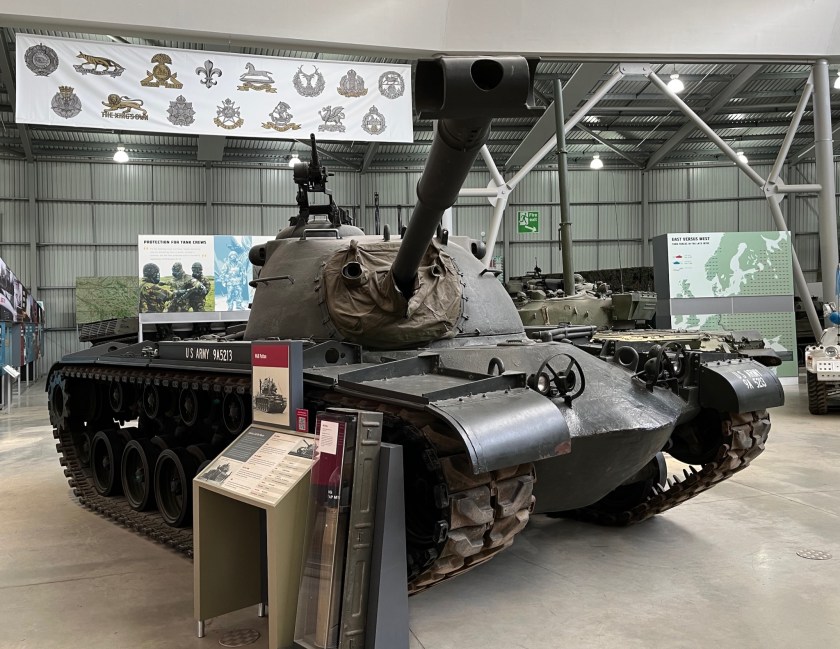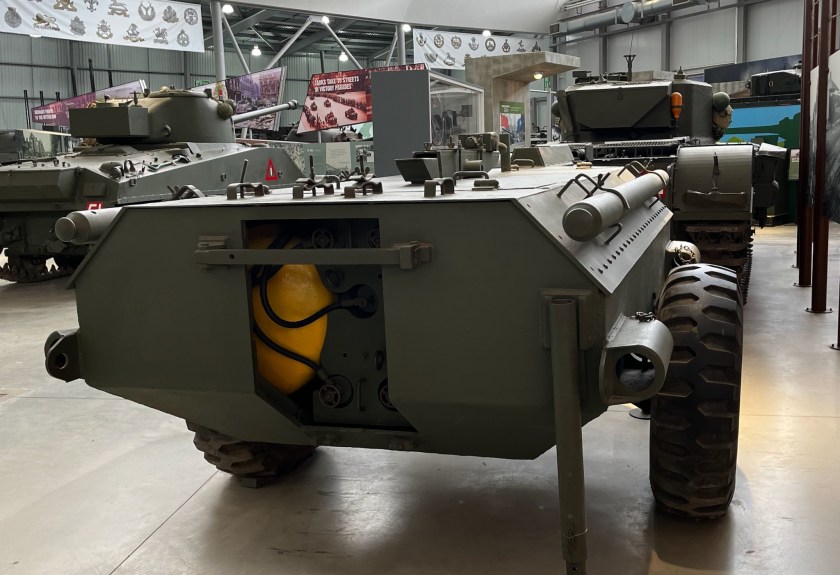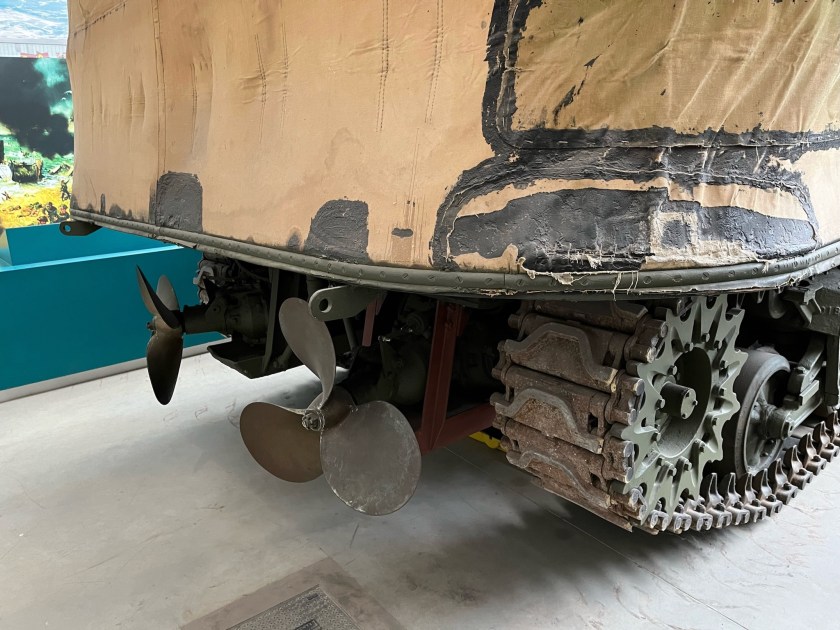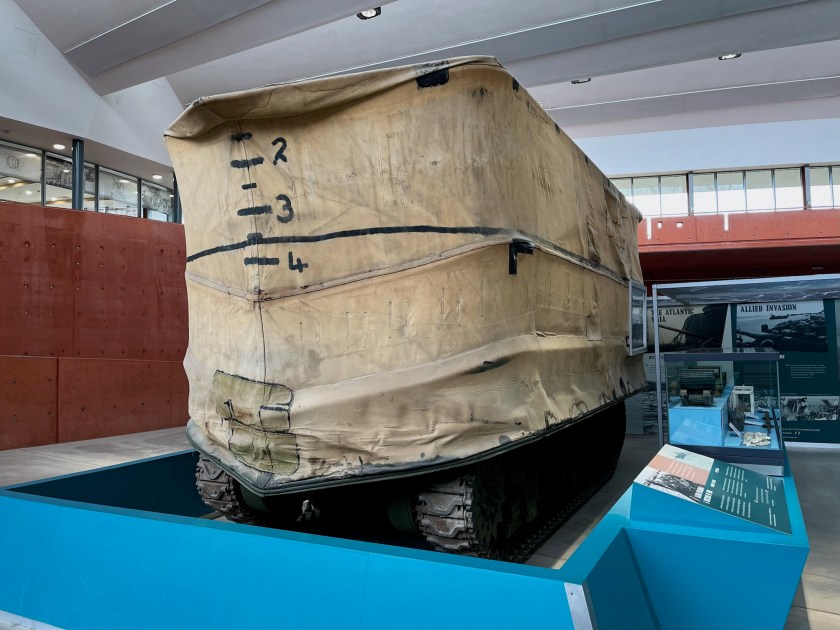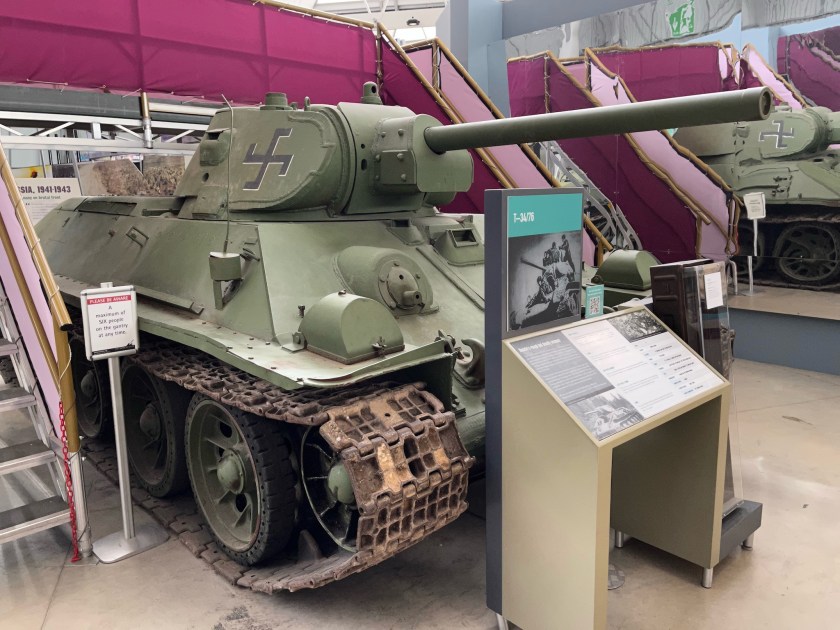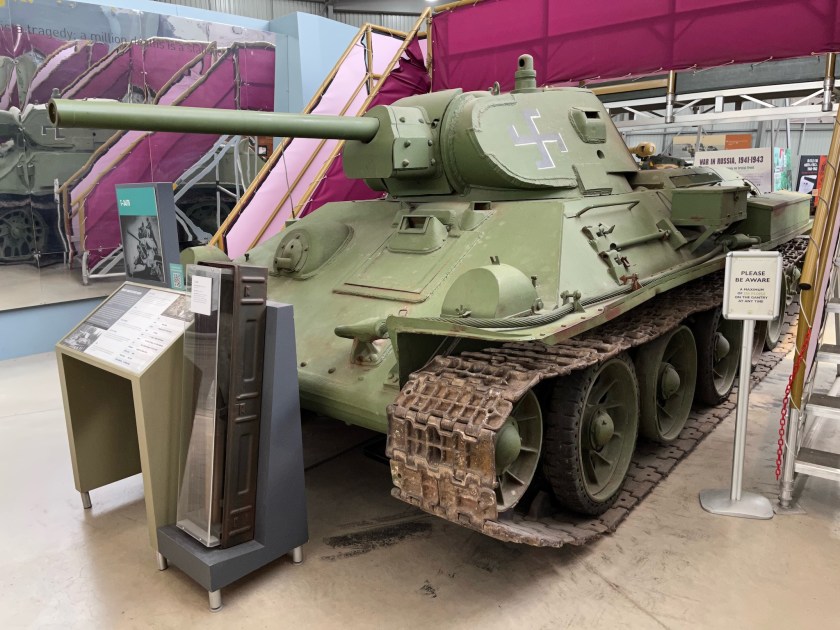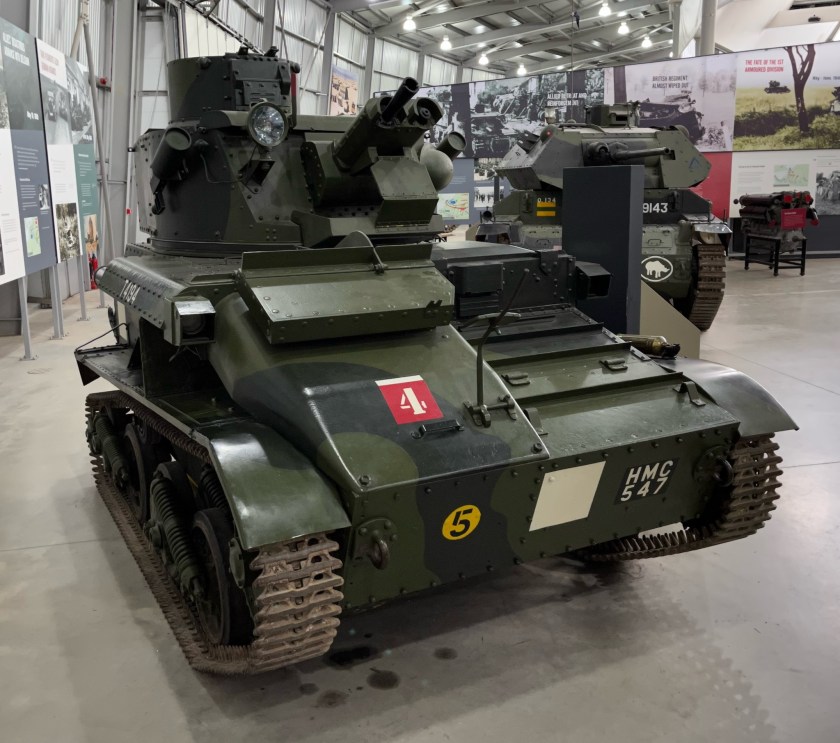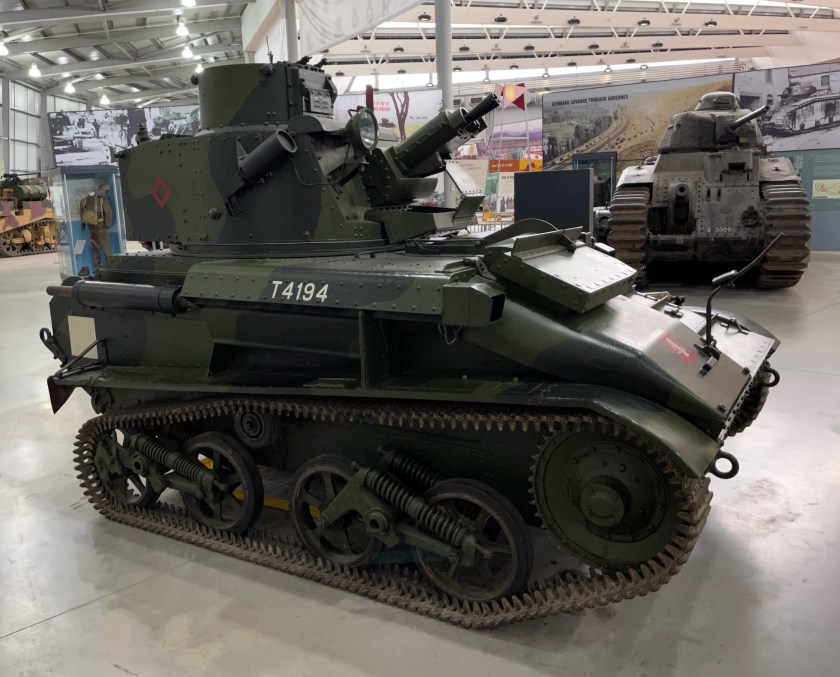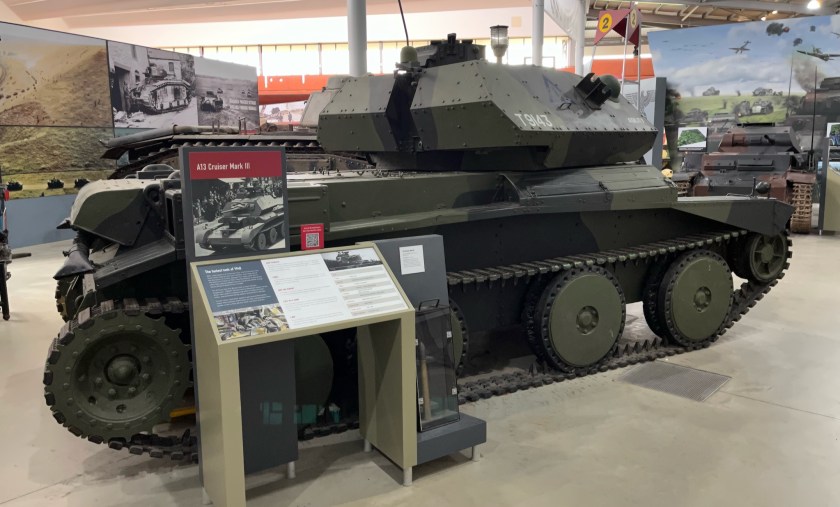The Panzer II was the common name for a family of German tanks used in World War II. The official German designation was Panzerkampfwagen II (abbreviated PzKpfw II). Although the vehicle had originally been designed as a stopgap while more advanced tanks were developed, it nonetheless went on to play an important role in the early years of World War II, during the Polish and French campaigns. By the end of 1942 it had been largely removed from front line service, and production of the tank itself ceased by 1943.
This one was on display at the Bovington Tank Museum.

When they first appeared, in 1936, the Panzer IIs were regarded as platoon commander’s tanks. They were also employed to give fire support to the Panzer I in combat with enemy tanks. However by 1940 they had been outclassed and were relegated to the reconnaissance role. This exhibit, an Ausfuhrung (or Model) F featured improved armour and was introduced in 1941.
This tank was captured by British forces in North Africa but it is shown in the markings of 1st Panzer Division at the time of the invasion of France in June 1940.

Another photograph of the Panzer II.
That was something I didn’t know until a few years ago that the German tanks in 1940 were painted grey and brown, I had always thought they were just grey. I personally blame Matchbox for this.

It was only after Blitzkrieg was released back in 2010 by Battlefront that I noticed the grey and brown camouflage scheme.
As recently as ten years ago the overwhelming consensus regarding early war German AFV paint schemes was that they were all painted in uniform overall panzer grey (Dunkelgrau – RAL 7021 – formerly RAL 46). However, in 2002 Tom Jentz and Hilary Doyle published an article based on primary sources stating all German vehicles at the beginning of World War II were painted in a two tone camouflage scheme of panzer grey with one third of the vehicle painted in a disruptive pattern of dark brown (Dunkelbraun – RAL 7017 – formerly RAL 45). The order to move to an overall panzer grey scheme was not signed until the end of July 1940.
Back in 2011, I blogged about finding the 15mm Zveda plastic model kit.
Though you can buy a resin version of the Pz II I was plesantly surprised to find a plastic 1/100th scale kit of the Pz II in a model shop for just £1.25. Bargain!

Made my Zveda, a Russian firm… I did manage to pick up three of them. I am going to make them up as PzKpfw IIs for the Western Desert.
Note that the cover art of the box is all grey too… but by the time of the invasion of Russia, all German tanks were grey.
